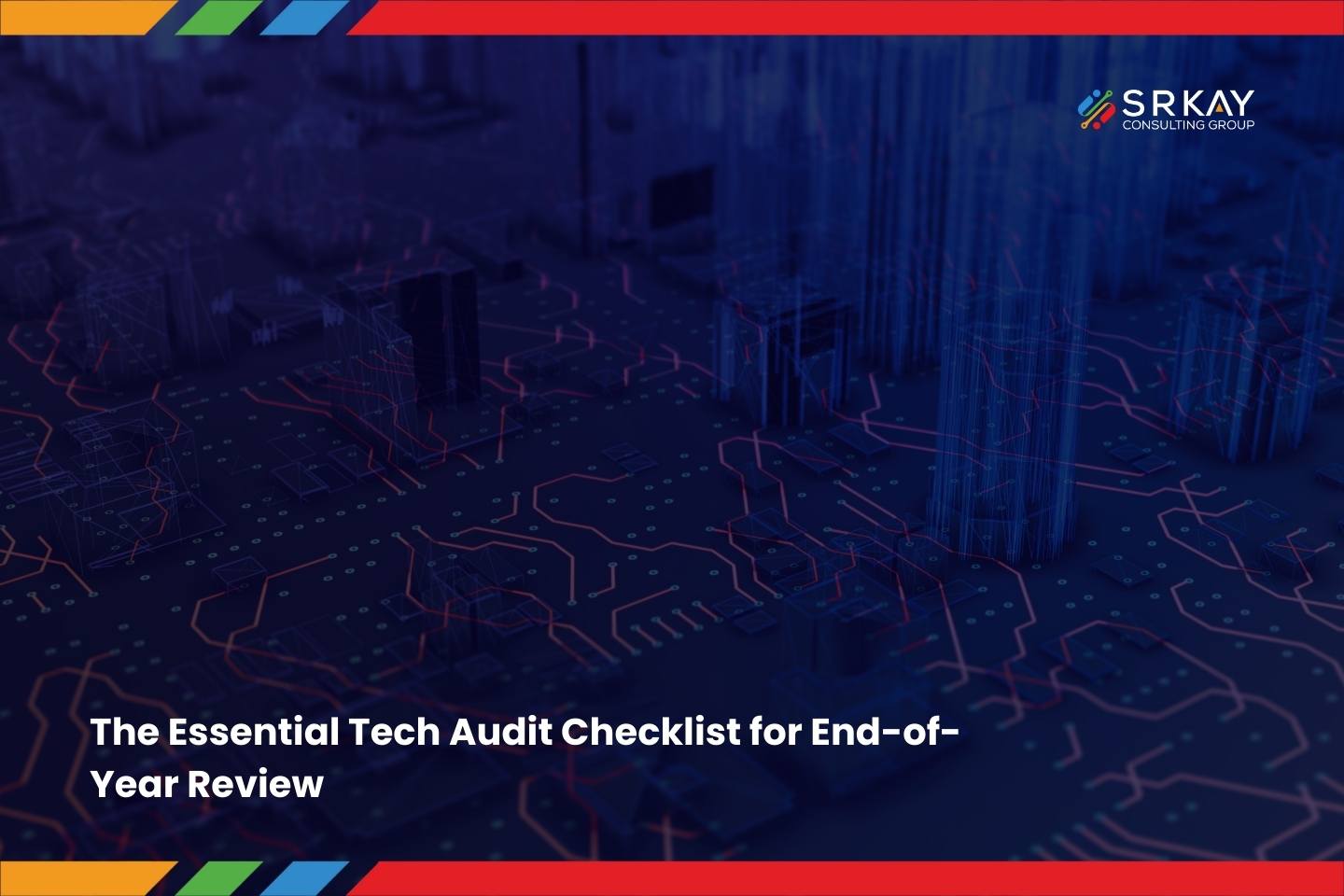As the year ends, businesses must reflect on their operations, particularly the technology that underpins their success. Conducting an end-of-year tech audit ensures your IT systems are secure, efficient, and compliant. This comprehensive guide outlines a structured checklist to help you evaluate and optimize your technology infrastructure effectively.
1. Security Assessment
Review Security Policies
Cyberattacks are projected to cause damages of $10.5 trillion annually by 2025, making robust security protocols a non-negotiable priority. Ensure all policies are updated to tackle modern threats and align with industry standards like GDPR or HIPAA. Provide regular security training to employees to address evolving threats.
Access Controls
Inactive user accounts are a common weak point. Identify and delete dormant accounts or those belonging to former employees. Implement multi-factor authentication (MFA) universally. Regularly review role-based access controls to ensure minimal necessary access.
Incident Reporting
An efficient incident reporting mechanism is vital. Evaluate real-time documentation and quick resolution capabilities. Encourage mock incident response drills to test team preparedness.
2. Performance Evaluation
Network Performance
Monitor CPU usage, RAM utilization, and bandwidth to identify bottlenecks. Downtime can cost large organizations $5,600 per minute. Use proactive monitoring tools for early alerts.
System Development Processes
Review your software development and deployment methods. Agile workflows and regular code reviews enhance scalability and security. Incorporate user feedback to refine functionality.
3. Compliance Review
Regulatory Compliance
Avoid fines by ensuring compliance with laws like SOX or GDPR. GDPR-related fines totaled €1.5 billion in 2023 alone. Engage third-party auditors for impartial assessments.
Documentation of Internal Controls
Keep financial and IT processes well documented. Update them regularly to reflect operational or regulatory changes.
4. Financial Records and Management
Organize Financial Statements
Reconcile IT expenses and align them with financial statements. Categorize technology investments clearly and use automation tools for better accuracy.
Reconcile Accounts
Ensure IT-related costs like licenses and subscriptions are included in reconciliations. Review vendor contracts for potential savings.
5. Technology Utilization
Software and System Quality
Audit software usability and compliance with coding standards. Use tools like SonarQube to identify issues. Remove obsolete applications.
Documentation and Reporting
Maintain detailed logs of system updates, breaches, and changes. Standardize documentation formats for accessibility and continuity.
6. Risk Management
Identify Risks
Use a Risk Control Matrix to map potential vulnerabilities. Prioritize risks by severity for effective mitigation.
Control Effectiveness Testing
Simulate cyberattacks and run penetration tests. These reduce breaches by up to 37%. Document lessons learned and integrate them into your strategy.
7. Continuous Improvement
Learn from Past Audits
Analyze previous audit results to spot recurring issues. Use year-over-year comparisons to gauge improvement.
Optimize Processes
Adopt automated systems, such as ticketing tools, to cut response times. Train teams on new processes and technologies.
8. Data Backup and Disaster Recovery
Routine Testing
Backup failures occur in 20–30% of cases. Regularly test recoverability of files, apps, and databases. Use a hybrid cloud-local backup strategy.
Disaster Recovery Plan
Define RTOs and test recovery procedures. Establish clear communication channels for crises.
9. Physical and Environmental Controls
Don’t overlook physical security. Audit biometric access, surveillance, and power backups. Conduct routine checks to identify weaknesses.
10. Documentation and Reporting
Security Protocols
Ensure up-to-date, accessible protocols. Provide security training regularly. Include quick-reference checklists for emergencies.
Incident Reports
Keep a repository of incident logs. Analyze trends and use visual dashboards for better insights.
11. Regulatory Compliance
Licensing
Verify software licenses to avoid legal risks. Use automated alerts for renewal deadlines.
Adherence to Standards
Review industry-specific compliance (e.g., PCI DSS). Benchmark against industry leaders to find and fix gaps.
12. Performance Monitoring
Network Uptime
Downtime costs businesses an average of $1.5M annually. Monitor outages and address root causes promptly.
Testing and Implementation
Evaluate rollout plans for new tech. Poor testing can delay deployment and increase risk. Prepare rollback options for critical updates.
Key Takeaways
Conducting an end-of-year tech audit is an investment in your organization’s future. By addressing security vulnerabilities, improving performance, and ensuring compliance, you position your company for success in the coming year. A robust tech audit fosters trust among stakeholders, mitigates risks, and optimizes operations, enabling your business to thrive in a technology-driven world.

